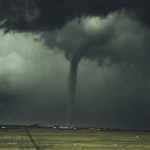March 18, 2019 3:00 pm
Published by Climate Extremes
Department of Geography, National University of Singapore We welcome applications from candidates with expertise in the areas of regional climate & climate change research including all aspects of climatology. Being able to complement current strengths in the Department will be viewed positively, as will a clear plan for developing a future research trajectory within the region. We encourage applicants with strong skills in experimental research, environmental modelling, GIS and/or remote sensing to apply. All applicants should have an established research profile... View Article
 March 8, 2019 9:27 am
Published by Climate Extremes
March 8, 2019 9:27 am
Published by Climate Extremes
How wet the soil is before a storm can determine the amount of rain that falls. This research also produced some interesting findings for rainfall in Australia.
 February 18, 2019 3:40 pm
Published by Climate Extremes
February 18, 2019 3:40 pm
Published by Climate Extremes
This PhD project will apply a state of the art, hierarchical Bayesian modelling framework to determine how past climatic conditions influence current responses to high CO2concentrations.
 February 13, 2019 3:40 pm
Published by Climate Extremes
February 13, 2019 3:40 pm
Published by Climate Extremes
Weather and climate extremes occur on a wide range of time and space scales. Weather extremes occur on shorter timescales and are regionally or locally specific while climate extremes tend to be on longer timescales and can impact a region through to the whole globe. This note provides a statement on what we know about how weather and climate extremes might change in the future.
 February 11, 2019 4:08 pm
Published by Climate Extremes
February 11, 2019 4:08 pm
Published by Climate Extremes
Computer models used to simulate global climate agree the climate will warm in response to increasing atmospheric greenhouse gases. However, a recent paper by Bador et al. (2018)1 includes results that highlight our uncertainty about exactly how extremely wet conditions will change in Australia. Further development of Australia’s national climate model, ACCESS, may help reduce this uncertainty.
 December 7, 2018 3:09 pm
Published by Climate Extremes
December 7, 2018 3:09 pm
Published by Climate Extremes
As the year draws to a close and we pause to look back over 2018, it’s not surprising that with the ending of the ARC Centre of Excellence for Climate System Science (ARCCSS) on June 30 and the ARC Centre of Excellence for Climate Extremes (CLEX) building up a head of steam after its first full year, we have packed a lot into the past 12 months.
November 8, 2018 1:04 pm
Published by Climate Extremes
Following the passage of a strong cold front, Melbourne shivered through unseasonal cool temperatures, showers and scattered hailstorms. One particular storm, developing around 8pm over Port Phillips bay, producing a 25 km long hail swath stretching from St Kilda to Ringwood. Some areas experienced significant hail depths which lasted well into the early morning. Hail was also reported in Footscray, CBD and Cheltenham.
October 23, 2018 5:10 pm
Published by Climate Extremes
Severe thunderstorms across Queensland on Sunday, October 21, provided the first opportunity for citizen scientists to report severe weather using the WeatheX app.
 September 18, 2018 9:59 am
Published by Jenny Rislund
September 18, 2018 9:59 am
Published by Jenny Rislund
Climate change is affecting weather patterns in many locations. In East Africa, changing rainfall would challenge the livelihoods of farmers. However, perceptions of local farmers and data from local weather stations differ. Is rainfall changing? How can we understand these two important information sources?






